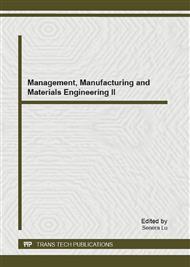p.7
p.12
p.16
p.21
p.26
p.31
p.37
p.41
p.46
The Microstructure and Friction Properties of In Situ TiB2 Particle-Reinforced Al-10Sn Matrix Composites
Abstract:
To develop a new bearing material with promising tribological properties, low cost and without harmful elements, the TiB2 particle-reinforced Al-10Sn matrix composites were fabricated by Mixed Salt Reaction synthesis process. The solidification microstructure of the composites was investigated by optical microscope and scanning electron microscope. The results indicate that the grains of α-Al matrix are fine, the TiB2 particle size is less than 1.5μm, and the agglomeration of TiB2 particles is mainly present at the boundary of α-Al phase, where the mechanical mixture of TiB2 and β-Sn was observed. The oil lubricated sliding friction tests of composites and matrix alloy were conducted on a small thrust ring versus disc friction testing machine under different loads. The results indicate that, at low load (200N), both of composites and matrix alloy have a conspicuous running-in period and exhibit a better antifriction property with the coefficient of friction (hereafter COF) being 0.017 and 0.015, respectively. However, at high load (400N), the COF of composites and matrix alloy is approximately 0.080 and 0.17, with the frictional temperature being 58°C and 75°C, respectively. The composites exhibit higher bearing capacity and excellent antifriction
Info:
Periodical:
Pages:
26-30
Citation:
Online since:
December 2012
Authors:
Price:
Сopyright:
© 2013 Trans Tech Publications Ltd. All Rights Reserved
Share:
Citation:


